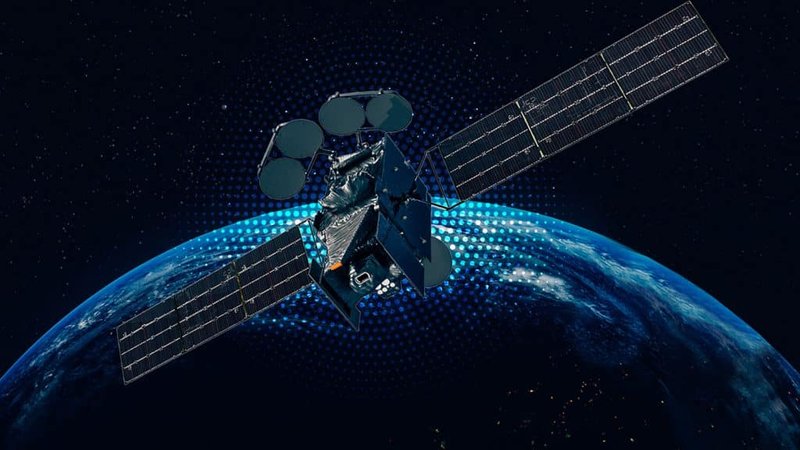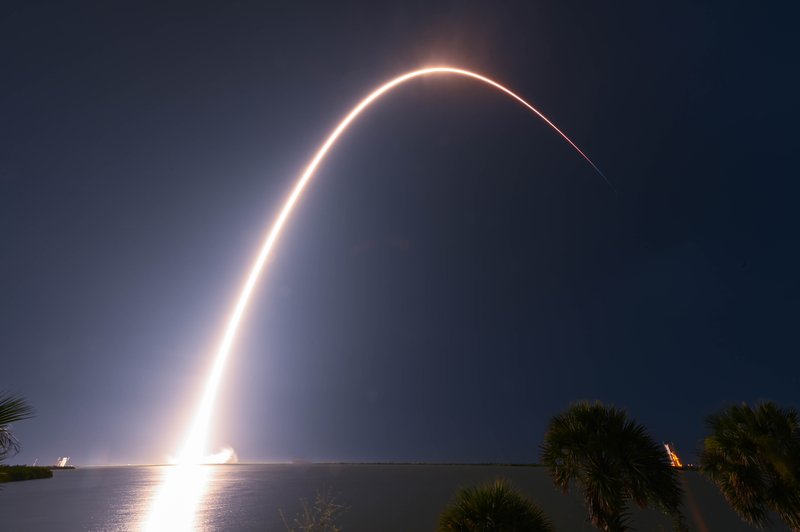How Seamless Communications are Enabling Multi-Domain Operations (Studio)
Photo: Intelsat
Brought to you in partnership with Intelsat
What do cyber, land, air, and sea have in common? Communications. More specifically, there is a need to share large quantities of data from various sensors across multiple domains, beyond line of sight (BLOS), and within very short timeframes to enable fast, efficient, and effective multi-domain decision-making.
Space-based communications (SATCOM) have become critical in this context. But as threats become faster, more complex, and potentially multi-domain, how can all the necessary information be accessed quickly, securely, and across partners?
Leveraging decades of experience in space-based communications, Intelsat has developed solutions that enable seamlessly interoperable, dynamic, and scalable communications across networks and between allies.
As Rory Welch, Vice President for Global Government Satellite Services at Intelsat, stated, ‘Space-based communications have become increasingly essential for modern military forces that are really operating around the world in all domains, whether it’s air, land, sea, or space.’
Multi-Domain SATCOM Challenges
Over the past decade, the resurgence of peer and near-peer confrontation has resulted in faster, more varied, multi-domain threats. In such a context, multi-domain operations have become the norm rather than the exception.
Effective military operations now rely on access to large quantities of data from cyber, land, air, and sea to build complex, near-real-time situational awareness pictures and enable efficient and effective decision-making.
In this context, SATCOM has become an increasingly important core enabler. Beyond facilitating the exchange of large volumes of data gathered from sensors across multiple domains, space-based communications allow armed forces to circumvent potential terrestrial communication infrastructure damages and, most importantly, allow communication BLOS.

Yet, a number of limitations remain. Key among those is the fact that different SATCOM operating nations leverage various types of standards – i.e., waveforms – rendering information sharing between allies more complex.
Additionally, as SATCOM providers start to leverage different types of orbits, such as Low Earth Orbit (LEO) and Medium Earth Orbit (MEO), in addition to Geostationary Earth Orbit (GEO), switching between these can be difficult.
Finally, military operations often require connecting to terrestrial networks, especially at the tactical edge, which frequently entails different equipment, thus adding weight, complexity, and, inevitably, time to any mission.
Enabling Seamless Communications
Whether armed forces are carrying out military or humanitarian missions, the end game is the same: because every second can make the difference between life and death, information sharing speed, quality, and quantity is critical.
‘Looking at the future, we’re really talking about hybrid networks of military, commercial capabilities that are really enabling dynamic, interoperable, and scalable connectivity across multiple layers of connectivity, and across all domains,’ explains Welch.
That is why Intelsat is part of the WAVE (Waveform Architecture for Virtualized Ecosystem) Consortium. This initiative aims to bring interoperability to the SATCOM industry by establishing standardised architectures and specifications to enable virtualised networks.
In other words, if armed forces are no longer bound by hardware-dependent systems, they can easily access different types of waveforms, thus facilitating communication through SATCOM systems between allies and partners.

Intelsat is also leveraging virtualisation to enable seamless and secure orchestration of communication across domains so that warfighters can make decisions based on trusted data.
‘We’re leading the development of some of the thought leadership on these standards, things like 5G non-terrestrial networking standards, waveform virtualisation,’ Welch highlights.
Cloud solutions are key to this endeavour. They dynamically allow the efficient organisation of all the resources, facilitating multi-domain armed forces’ access to data across military and civil networks and between different orbits with one system – rather than through multiple kits. This multi-layered connectivity is critical for Primary, Alternate, Contingency, and Emergency (PACE) communications plans.
Finally, to ensure multi-domain operations can achieve information superiority across all domains, SATCOM must allow fast and efficient information sharing. Yet, SATCOM is often known to suffer from latency issues.
That is why Intelsat has been working on the development of software-defined and optical networking communications.
Welch elaborates, “We’re investing in technology partners to develop optical communications capabilities. We’re pretty excited about that – this is an emerging technology, right – but we see that as a very robust capability in the future that will allow... highly secure connectivity.”
This innovative approach to SATCOM, which relies on the orchestration of bi-directional optical links, will provide faster, more interoperable connectivity between ground and space and across different orbits.
Meet Intelsat at Eurosatory
This year is the first time Intelsat will exhibit at Eurosatory, and it will display several of its advanced user terminals designed to facilitate the efficient dissemination of large volumes of trusted data across domains.
Just as importantly, Intelsat experts will be available to explain how the company is designing new ways of facilitating access to its innovative solutions, such as through the use of subscriptions.
Because geopolitical and threat environments change often and quickly, armed forces must be able to scale communications capacity up and down as needed.
To learn more about Intelsat's solutions, see the company at Eurosatory Hall 5b- E453
More from Studio
-
![Light Reconnaissance Strike – enabling a vital mission set (Studio)]()
Light Reconnaissance Strike – enabling a vital mission set (Studio)
A new system-of-systems concept will unlock digital integration of sensors and weapons for Light Forces, allowing them to shape the battlefield environment on their own terms and upgrade legacy platforms.
-
![Energy evolution: How laser defence systems are powering the next phase of air defence (podcast)]()
Energy evolution: How laser defence systems are powering the next phase of air defence (podcast)
Laser-based air defence is moving from promise to deployment as global threats evolve. In this special podcast, we explore how high-energy laser systems are reshaping interception strategies.
-
![Unlocking the potential of Light Forces in modern warfare (Studio)]()
Unlocking the potential of Light Forces in modern warfare (Studio)
The Ukraine conflict has highlighted the strategic importance of “Light Forces” – rapidly deployable dispersed units, able to conduct an expanding range of mission sets. What technologies and equipment are needed to ensure their success in combat?
-
![Resilience, adaptiveness and collaboration vital for success in space (Studio)]()
Resilience, adaptiveness and collaboration vital for success in space (Studio)
Speakers at the Defence In Space Conference (DISC) 2025 highlighted the critical and evolving role of space in national security, defence and the global economy.
-
![Precision on Demand: The New Age of Loitering Weapons (Podcast)]()
Precision on Demand: The New Age of Loitering Weapons (Podcast)
Loitering munitions provide vital capabilities in the disrupted and unpredictable modern battlespace, from real-time ISR to a virtually “on demand” strike capability. Rafael is looking to the future of the technology, empowering systems to operate with increasing autonomy in hostile environments.
-
![Beyond Survivability: How Active Protection Systems Are Empowering Commanders (Podcast)]()
Beyond Survivability: How Active Protection Systems Are Empowering Commanders (Podcast)
As threats diversify and intensify, APS are proving essential not just for vehicle protection but also for enhancing operational freedom, effectiveness and mission success in contested environments.




























